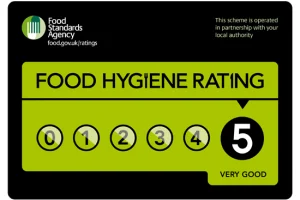A COLLABORATIVE research project between the Steel and Metals Institute (SaMI) at Swansea University and Tata Steel UK showcases the high performance of steel food cans and the accurate tests they undergo before reaching consumers.
This is the 1000th joint research project undertaken between the two parties. Standard food cans are predominantly produced with a steel base coated with tin and sometimes an additional internal polymer lining. Canned foods provide multiple advantages including an ability to extend product shelf life; preserve nutritional contents; durability; require no refrigeration and are easily recycled.
Like all steel products, food cans must meet the highest standards of performance and quality. Safety is critical, given the can will contain food.
As the industry moves towards making steel from recycled scrap the same thorough testing will also be applied to scrap metal, a process that emits lower carbon emissions than producing it from raw materials such as coke and iron ore.
Tata Steel’s Trostre plant is the primary supplier of packaging steels to many brands found in the UK home, spanning food, home and personal care products.
In SaMI’s facility they replicate real-life conditions, putting steel products through a set of rigorous tests, to ensure they meet the very exacting standards required.
Dr Barrie Goode SaMI’s Director Industrial Research and Development explains how food cans are tested: “We need to check how different steels interact with different foodstuffs, which may include chemical substances such as salt or vinegar. Of course, there must be no spoilage of the food, but the structure of the can must also remain robust and intact.
“Our accelerated tests mean we can fast-forward the effects of time on the can and contents, so it takes just a few weeks to simulate the effects of several years.”
Tata Steel’s James Edy, Coatings Researcher, explains further: “A typical testing process involves various steps. We fill cans with food simulant solutions, then seam the lid on. We leave a small amount of headspace – which creates a vacuum inside when the can is sealed.
“Then the cans are sterilised at more than 100°C under pressure, using saturated steam, hot water, or steam and air. As the pressure increases, the boiling point of water also increases, allowing superheating of water without boiling. This process disinfects the contents. It also provides a speeded-up way to assess any reaction between the can and contents.
“We then analyse the cans in microscopic detail for any degradation and causes. Our electron microscopes magnify samples up to 1000 times to identify any areas of concern. We then carry out microanalysis on these using a technique called energy dispersive spectroscopy, which identifies and quantifies the chemical elements in a sample.”
Following the testing process, researchers look to examine several factors including if the lacquer film has blistered or peeled from the can; evidence of corrosion even at microscopic level; visual changes to the can such as discolouration; or if the can meets stringent quality, safety and reliability standards.
James concluded: “This is vital information for our customers to know, so they can assure their customers that the product is of the highest quality. It also means the public can be confident that their cans have been strictly tested proving their quality.”














